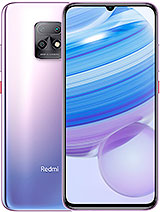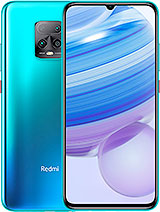POCO X3 NFC vs Redmi 10X Pro - THE WRONG CHOICE? By Frankie Tech
Hi guys it's Frankie from Frankie tech good to see you guys again, and I'm here today with a comparison that a lot of you guys have been asking Frankie tech you've done the full Poco x3 coverage, but you haven't compared it to what you consider one of the best value champs of 2020 and that's what I'm going to do today. It's the Poco x3 NFC versus the Redmi 10x pro, but after quickly covering the specs there's a specific area of conversation. I want to have with these two phones and that is Xiaomi's continuing decision to go with higher refresh rate lcds over what I thought was the better option, which was 60, hertz AMOLED displays in their mid-range and lower mid-range phones. Now, don't get me wrong. I do like the panel on the Poco x3 NFC, but recently I feel that Xiaomi is kind of turning their back on what they originally did and what I loved so much about this Redmi 10x pro, and it seems I'm not alone a lot of the comments. I've seen from you guys about the upcoming me 10t pro, and even this poke x3 when it was announced, was that it did not have an AMOLED display, and meanwhile, here on the Redmi 10x pro for coming up soon to four months.
Furthermore, I've enjoyed this phone with the 60 hertz AMOLED display and just having, let's face it, a flagship spec on a very low price phone, and so after covering the quick specs. Let's talk about this conversation is Xiaomi, making the wrong choice going with high refresh rate LCD over low refresh rate AMOLED. Let's have a look, but before we do that quick rundown of the specs of these phones, 9.4 millimeters versus 9, millimeters, 215 grams versus 208 grams, and both of these phones are really well-built, considering they're made of plastic but gorilla glass 5 on the back, and you see the camera modules, the cutoff circle versus rectangular. To be honest, the build quality of both of these phones is solid for the price, and you do see here a little larger of a bezel at the bottom on both of these phones and pick your poison. Do you want a punch hole or do you want a notch? I think most people would decide.
This is the more modern look now, but I really don't mind the teardrop notch on the Redmi 10x pro displays 6.67 versus 6.57 inch, and we obviously have LCD versus AMOLED 120 hertz versus 60 hertz, and we'll get into that full conversation in a minute and the snapdragon 732g versus the density 820, and you know how I feel about this chipset guys easily the best mid-range chipset on any phone mark. My words guys once this chipset goes global. You will see what I mean with 6 gigs ddr4x ram versus 8 gigs and 128 gigs UFS 2.1 on both of these phones, dual speakers on the Poco x3 NFC versus single bottom firing on the Redmi 10x pro a 5160 milliampere capacity versus 4520, 33 watt fast charging on both phones and, last but not least, a 64 megapixel main camera mix 682 versus the Univision ov48b 48 megapixel main camera on the Redmi 10x pro 13 megapixel ultra-wide versus 8 megapixels. The 10x pro does have an 8 megapixel three times: optical zoom, is, stabilized telephoto lens, and so there you have it guys, quick rundown of these specs and, as you can see, the Poco x3 NFC does have a number of areas where it has an advantage over the Redmi, 10x pro and obviously, most importantly, in the price. You can get this Poco x3 NFC now globally for 229 euros starting price, while the Redmi 10x pro is coming in closer to the 300 plus mark, and you will need to import it because it's only available in China, and that is why this phone has been harder to recommend recently, just because of its limited availability.
But despite that and now going to the main part of this conversation, there are many reasons why this Redmi 10x pro is still the better choice. But the main reason for me has got to be the included 60 hertz AMOLED display, and I really do feel for the past couple of months of releases. Xiaomi is kind of turning its back on this spec. I'm not sure what happened, because when the Redmi 10x and 10x pro was released, a lot of you guys were super excited, and we finally got to see an AMOLED display that you typically only see on flagship phones on a mid-range and even lower mid-range phone in this Redmi 10x series- and yes, I understand LCD- does have its properties that make it better like a sharper display, maybe less eye strain. A lot of you guys complain about, but look guys.
All I need to do is go into the settings and I can already show you look how much warmer and more true to life. This display looks, and also you see it. There look at the lack of ghosting on the Redmi 10x pro versus on the Poco x3 NFC, it's pretty obvious. Once you put an lcd next to an AMOLED display to see the difference and yes, maybe Xiaomi doesn't have access to the punch, hole. AMOLED displays to do a lower cost AMOLED phone, but I think a lot of you guys would be okay with this type of water drop notch if it meant having AMOLED on your Redmi phone and yes with vivid mode turned on, you can kind of get close to the saturation that you see on AMOLED displays, but it will never be as intense and looking here at the icons, I'm not sure if it comes over on the camera, but they are just so much more vibrant and so much more punchy here on the Redmi 10x pro versus on the polo, x3 NFC, and maybe you've even noticed it just watching this video.
But do you notice that the Poco x3 is so much more dim than the Redmi 10x pro? That is one of the properties of LCD? It seems to dim a lot more in video and at certain angles, and you definitely notice the difference, and that is because, with AMOLED, each individual pixel is lighting up instead of using backlight technology and just clearly here, you can see how much more vibrant this image displays, but most importantly guys it's in the night that I just love using this phone over the Poco x3 NFC at nighttime. It's just tough to use LCD. When I have so many AMOLED options sitting around and despite having a smaller display, I always gravitate to phones like the Redmi 10x pro or even this pixel, which has an even smaller display, but I like it more because it works better in the night, with its AMOLED display and in my review of the Poco x3 NFC, I said it had a solid LCD panel and let's face it, 120 hertz is an upgrade. It is an improvement over the 60 hertz that we see on this phone, but is it really an upgrade if you're having to switch to LCD? To do this? Look I get it. A higher refresh rate is an aspirational spec for many of you, but guess what so is AMOLED, and how do I know this because most of you guys out there, if you had a choice to get a flagship phone for free, you would automatically say yes and if you look at Xiaomi's flagship lineup, what display tech do they use? Well, here is the mi 10 pro, and what display tech does this phone use? It uses a 90, hertz AMOLED display, and here I have the flagship of all Xiaomi flagships, the mi 10 ultra.
It uses a 120 hertz AMOLED display, but it's not just Xiaomi. This works with every single flagship phone, here's the OnePlus 8 pro, and what technology does it use, 120, hertz, AMOLED display and finally, what I consider probably still the affordable flagship champ of 2020, the Redmi k30 pro, and what display tech does it use? It uses a 60 hertz, albeit a little lower, refresh rate but AMOLED display and so to wrap up guys. I guess my point here is that I think Xiaomi is actually making the wrong choice. Moving in this direction of picking higher refresh rate lcds and putting them in their latest phones, and while I still do enjoy this Poco x3 NFC, I just feel like Xiaomi's decision-making in what displays they're using is kind of going against what they were doing in the first half of this year, with phones like the Redmi k30 pro and the Redmi 10x pro that started. Bringing AMOLED displays to an even lower price point, and that's why I've loved and recommended phones like the Redmi k30 pro and this Redmi 10x pro to you guys and so Xiaomi.
I know you have your reasons for going in the direction that you're going, but, in my opinion, the best choice you can make for lower and lower cost phones is to bring 60 hertz AMOLED display to the market in any upcoming Redmi Note 10 series and bring this gorgeous 60hz AMOLED display, like on this Redmi 10x series to even lower cost phones, but hit me up in the comments 120hz, LCD or 60hz AMOLED, which would you pick hit me up in the comments. I'd love to hear about it and that's it for this video, if you liked it give me that thumbs up and if you love the content of Frankie tech subscribe to the channel, hit the bell icon for future updates and apologies again guys for the drilling they are driving me insane, but hopefully this video wasn't too affected by it. So that's it- and this is where I leave you by saying this is Frankie tech signing off have a good one. You.
Source : Frankie Tech


























